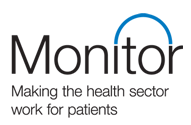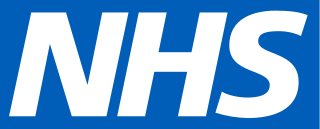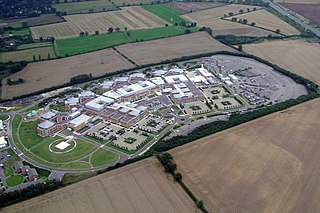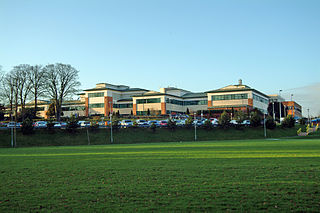An NHS foundation trust is a semi-autonomous organisational unit within the National Health Service in England. They have a degree of independence from the Department of Health and Social Care. As of March 2019 there were 151 foundation trusts.

Monitor was an executive non-departmental public body of the Department of Health, responsible between 2004 and 2016 for ensuring healthcare provision in NHS England was financially effective. It was the sector regulator for health services in England. Its chief executive was Ian Dalton and it was chaired by Dido Harding. Monitor was merged with the NHS Trust Development Authority to form NHS Improvement on 1 April 2016.

Sir David Nicholson is a public policy analyst and NHS Manager who is the Chair of Sandwell and West Birmingham Hospitals NHS Trust and Chair of Worcestershire Acute Hospitals NHS Trust. He was previously the Chief Executive of the National Health Service in England. He was appointed in October 2011 following the NHS reforms, having been seventh Chief executive of the NHS within the Department of Health since September 2006. He issued what has become known as the "Nicholson challenge" regarding the finances of the NHS. He retired from the role on 1 April 2014 in the wake of the Stafford Hospital scandal.

The West Midlands Ambulance Service University NHS Foundation Trust (WMAS) is responsible for providing NHS ambulance services within the West Midlands region of England. It is one of ten ambulance trusts providing England with emergency medical services, and is part of the National Health Service.

Criticism of the National Health Service (England) includes issues such as access, waiting lists, healthcare coverage, and various scandals. The National Health Service (NHS) is the publicly funded health care system of England, created under the National Health Service Act 1946 by the post-war Labour government of Clement Attlee. It has come under much criticism, especially during the early 2000s, due to outbreaks of antibiotic resistant infections such as MRSA and Clostridium difficile infection, waiting lists, and medical scandals such as the Alder Hey organs scandal. However, the involvement of the NHS in scandals extends back many years, including over the provision of mental health care in the 1970s and 1980s (ultimately part of the reason for the Mental Health Act 1983), and overspends on hospital newbuilds, including Guy's Hospital Phase III in London in 1985, the cost of which shot up from £29 million to £152 million.

The National Health Service (NHS) is the publicly funded healthcare system in England, and one of the four National Health Service systems in the United Kingdom. It is the second largest single-payer healthcare system in the world after the Brazilian Sistema Único de Saúde. Primarily funded by the government from general taxation, and overseen by the Department of Health and Social Care, the NHS provides healthcare to all legal English residents and residents from other regions of the UK, with most services free at the point of use for most people. The NHS also conducts research through the National Institute for Health and Care Research (NIHR).

Luton and Dunstable University Hospital is an acute hospital in Luton, Bedfordshire, England, run by Bedfordshire Hospitals NHS Foundation Trust. It provides medical and surgical services for over 350,000 people in southern Bedfordshire, the north of Hertfordshire and parts of Buckinghamshire. The hospital is often abbreviated to the 'L&D', and employs 3,400 staff.

The Royal Free London NHS Foundation Trust is an NHS foundation trust based in London, United Kingdom. It comprises Royal Free Hospital, Barnet Hospital, Chase Farm Hospital, as well as clinics run by the trust at Edgware Community Hospital, Finchley Memorial Hospital, and North Middlesex University Hospital. On 1 July 2014, the Barnet and Chase Farm Hospitals NHS Trust was acquired by Royal Free London NHS Foundation Trust, making it one of the largest trusts in the country.
The Royal Wolverhampton NHS Trust runs New Cross Hospital and West Park Rehabilitation Hospital in Wolverhampton and Cannock Chase Hospital in Cannock.

The Mid Staffordshire NHS Foundation Trust was a NHS foundation trust which managed two hospitals in Staffordshire, England:

County Hospital is an acute hospital with less than 200 inpatient beds, opened in 1983. It is the main hospital in Stafford, England. The hospital is managed by University Hospitals of North Midlands NHS Trust. County Hospital's Accident and Emergency unit is the only such facility in Stafford. Wards at County Hospital are numbered, with the exception of specialist units. The hospital changed its name on 1 November 2014 from Stafford Hospital to County Hospital as part of the dissolution of the Mid Staffordshire NHS Trust.
The Bristol heart scandal occurred in England during the 1990s. At the Bristol Royal Infirmary, babies died at high rates after cardiac surgery. An inquiry found "staff shortages, a lack of leadership, [a] ... unit ... 'simply not up to the task' ... 'an old boy's culture' among doctors, a lax approach to safety, secrecy about doctors' performance and a lack of monitoring by management". The scandal resulted in cardiac surgeons leading efforts to publish more data on the performance of doctors and hospitals.

The Furness General Hospital scandal involves an investigation by Cumbria Constabulary and other government and public bodies into the deaths of several mothers and newborn babies, during the 2000s at Furness General Hospital (FGH) in Barrow-in-Furness, Cumbria, England. Cases date back to 2004, with a number of major incidents occurring in 2008. The death of Joshua Titcombe and a suppressed report by the Morecambe Bay NHS Trust brought the spotlight onto FGH in 2011 when investigations began. Claims of medical records being intentionally destroyed alongside the discovery of major wrongdoing on behalf of midwives led to threats of closure to the maternity ward.
The Keogh Review into patient safety was carried out by Professor Sir Bruce Keogh in July 2013.
Sir Hugh Henderson Taylor, is a British former Permanent Secretary at the Department of Health and current Chair of Guy's and St Thomas' NHS Foundation Trust.

Julie Dawn Bailey CBE is a cafe owner who was a central figure in the Stafford Hospital scandal.
The University Hospitals of North Midlands NHS Trust was created on 1 November 2014. It runs Royal Stoke University Hospital, formerly run by the University Hospital of North Staffordshire NHS Trust and the County Hospital. It was formed after the dissolution of Mid Staffordshire NHS Foundation Trust. The trust is currently under the leadership of chair David Wakefield and chief executive Tracy Bullock.
Sir Robert Anthony Francis, KC is a British barrister. He specialises in medical law, including medical and mental health treatment and capacity issues, clinical negligence and professional discipline. He has appeared as a barrister for and chaired several high-profile inquiries into medical controversies/scandals.
Healthcare in Staffordshire was the responsibility of six clinical commissioning groups until July 2022, covering Stafford & Surrounds, North Staffordshire, South East Staffordshire and Seisdon Peninsula, East Staffordshire, Cannock Chase, and Stoke-on-Trent.
Institutional corruption is a phenomenon in public bodies that has been defined by the UK Independent Inquiry into the Murder of Daniel Morgan as placing the protection of reputation above fidelity to the truth, especially in the context of an independent or public inquiry.












